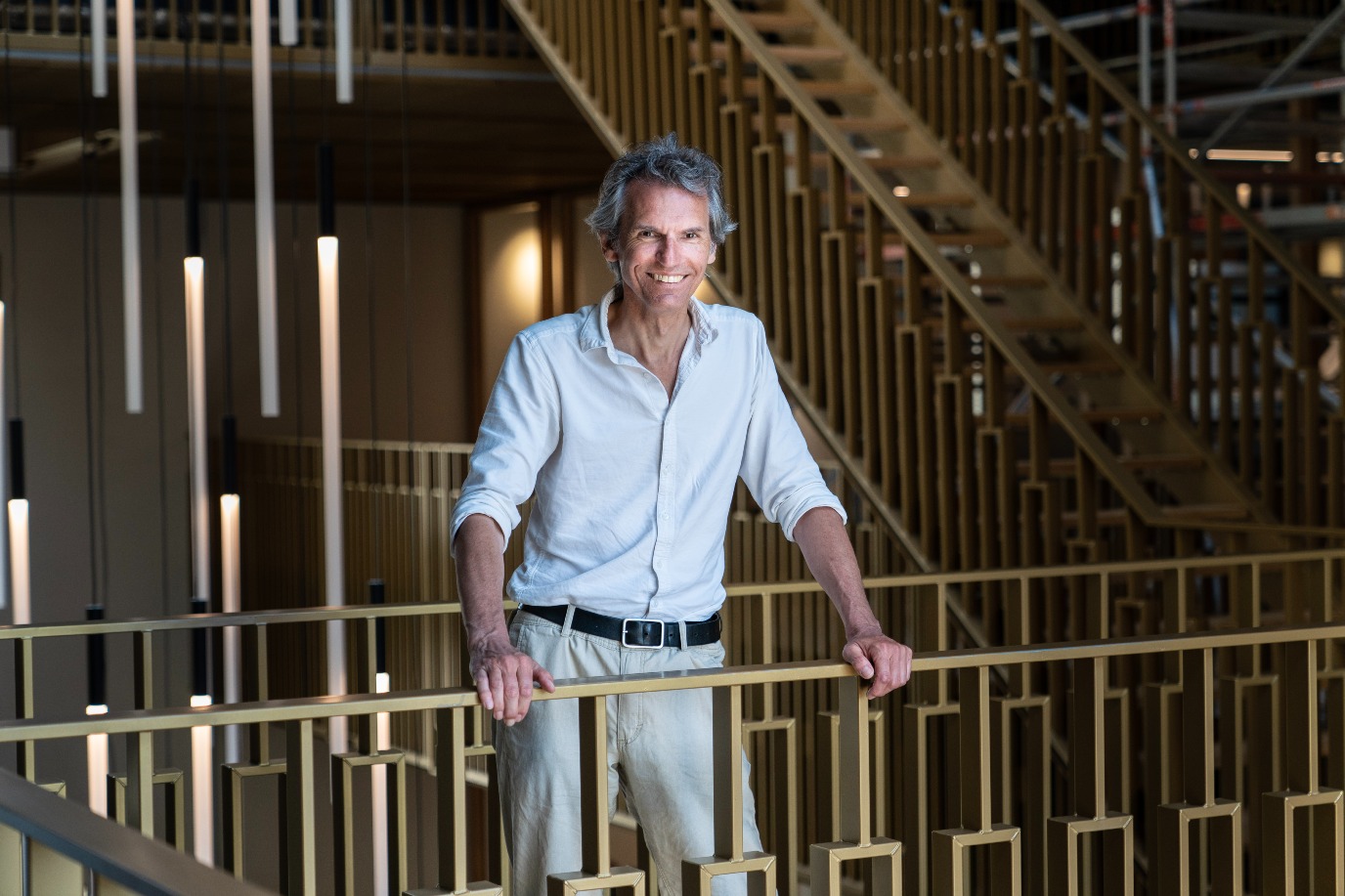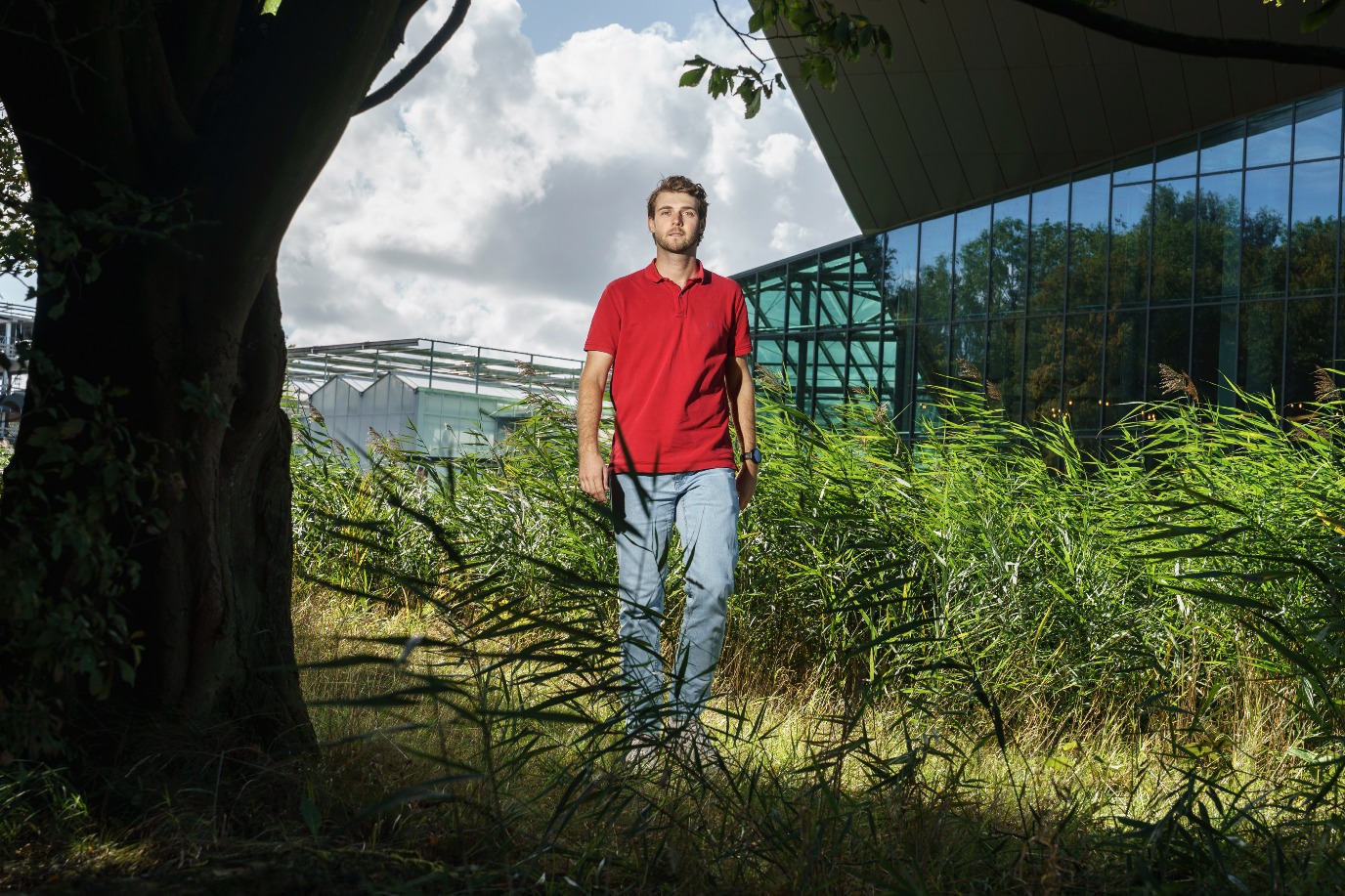What is nature worth to us?

Nature, who doesn't love it? And yet, structurally, too little money is allocated to it. Jesper Beverdam, like his supervisor Dr Frans Sijtsma, is a nature lover and trained economist. In his PhD research, within the Rudolf Agricola School for Sustainable Development and the M20 programme, he is investigating how financial instruments can be adapted or developed to stimulate nature financing. Part of this research concerns the extent to which citizens themselves are willing to contribute to nature conservation.
Text: Kirsten Otten / Photos: Reyer Boxem
How people value nature, but rarely pay for it
Whether it's a safari park in Africa, the Vondelpark in Amsterdam or the Reitdiepdal in Groningen, virtually every green area in the world has its own fan base. People who feel deeply connected to it and believe it is important that this place is protected. This appreciation is actually out of proportion to the financial resources made available for the development and protection of these areas. ‘In nature conservation, it's always about small changes,’ says Dr Frans Sijtsma, associate professor at the Faculty of Spatial Sciences. ‘For example, only a few hundred euros per hectare per year is spent on our dune areas, which could be called The Night Watch of our nature. In the midst of the chaos of motorways, farmers with their highly productive farming and large companies, that is nothing.’

An online community of nature lovers
A few years ago, Sijtsma developed the online platform Greenmapper Friends, where nature lovers can indicate which areas are of great value to them. The lovers of these specific areas and the associated nature and park managers together form an online community.
Research into willingness to contribute
PhD candidate Jesper Beverdam is using Greenmapper in his research. 'Among other things, I want to find out how willing people are to contribute financially to their favourite nature location, a kind of structural crowdfunding. To give an example: VVV Texel estimates that it has around 800,000 fans: people who love Texel's nature. If they all contributed one euro a year to a nature project, that would give us considerable leeway. So there is enormous potential there.’
To investigate this willingness, Beverdam devised an experiment in the form of a survey. 'It consists of two parts. In the first part, you indicate which areas are close to your heart, at local, regional, national and global level. In the next step, we ask you the hypothetical question of what you would be willing to spend on nature in the areas you have selected, and how you would divide that money between the themes of biodiversity, attractive landscape, sustainable entrepreneurship, culture and a fifth theme that you can determine yourself. This gives us insight into which aspects of nature people consider important.'
‘The places that people mention play a very important role in their lives, but that does not necessarily mean that they visit them very often,’ says Sijtsma. ‘An extreme example is that of people who have been on safari in Africa once, but continue to talk about how beautiful it is there for the rest of their lives. Economically, they only benefit from you being there in Africa, unless they manage to bind their friends or fans to them financially from a distance.’

From intention to practice
Beverdam's survey is not yet complete. ‘I haven't fully analysed all the responses I've received yet, but what strikes me is that many people indicate that they are quite willing to set aside an annual amount for their favourite areas. They also explain in great detail what that money should be spent on, a result of their connection to and knowledge of the area in question. But there are also people who say they don't want to pay anything because they believe that financing nature conservation is a public responsibility.' Of course, the setup is hypothetical, so it remains to be seen how people will act in reality.
At a later stage of his research, Jesper wants to look at how generous people are in practice: 'VVV Texel, Staatsbosbeheer and IVN nature education have concrete plans for a number of projects on Texel, which are actually too small to be funded by subsidies, as the number of man-hours required for those applications is already more expensive. These projects seem to me to be fitting candidates for a possible financing mechanism that we want to set up.'
Want to participate?
Curious about the research? You can participate yourself.
This project is funded by the Ubbo Emmius Fund and is part of the Rudolf Agricola School for Sustainable Development.
More news
-
15 September 2025
Successful visit to the UG by Rector of Institut Teknologi Bandung
